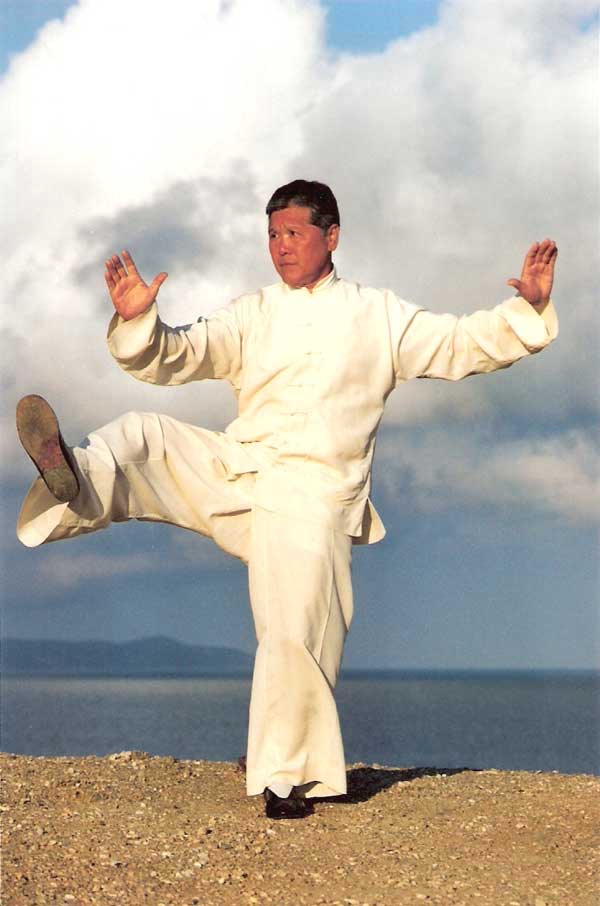Kicking in Taijiquan

Looking at martial arts competitions-particularly fights or sparring matches, it is very easy to get so captivated by the spectacular appearance of kicking techniques that one does not realise that a properly executed kick can land its victim in hospital or cripple him for life.

With Taijiquan, however, I have not found much in the line of being spectacular when it comes to kicking. In fact- the front kick, which I am going to discuss here- appears in most forms. Circular and crescent kicks are also found in some forms and upward kicks with the instep also occur, but the front kick is basically guaranteed to show up in most forms if not all.
If you have practiced Taiji walking a lot you will feel that each leg carries the body's weight on its own for a long time. This in itself develops the strength needed to effectively execute this kick. Another thing you tend to become aware of is the shifting of weight from one leg to another.
Rooted posture is of paramount importance. This is especially true if the kick is done in a retreating fashion with weight shifted onto the back leg so that the front kick stops a charging opponent dead in his tracks. If the hip is not vertically in line with the supporting foot one would either lose control of the kick or get pushed back by his own kick.
The heel of the supporting foot does not raise at all when the kick is in progress.
When doing the kick in an advancing manner a lot of destructive force can get generated- especially if you start with your weight on the back leg. It is very important, though, to keep the upper body directly on top of the lower body at all times. Leaving the upper body behind while the hips shoot forward will not generate sufficient power and will make for a troublesome recovery.
Leading with the upper body will actually impede the kick's reach and also rob it of power.
The idea is to put the momentum of walking forward into the kicking foot and to transfer that force into the target. It is very much walking through the target. Instead of the foot landing on the ground, however, it lands on the opponent's body.
I used to practice this kick a lot against a brick wall at an abandoned park or against a tree trunk.
When you kick hard surfaces like these you do not really want to strike with the ball of the foot as is done with Karate.
The same explosive power we create in punches by sharply contracting muscles at the point of impact gets generated with this kick. The body shoots forward, but only to the extent of weight drastically shifting onto the front foot, and the kicking leg shoots out knee first, whips out and then the abs, glutes and thigh muscles contract sharply to harden the body as the sole of the foot or heel shoots into the target.
Receiving this kind of kick is no fun at all and broken ribs, liver or kidney problems or even spinal injuries can occur. It is also not uncommon for the victim to be sent flying backwards when this kick lands.
I have transferred a lot of the principles behind this front kick into my roundhouse, side, back and reverse roundhouse kicks. A lot of speed gets sacrificed as the supporting foot has to turn first, but believe me- a lot of power gets added.
The first kick that gets mentioned in the comment section here or on G+ will get its Taiji version explained in the next post.
Stay well and train hard! :)


NIce discussion regarding Taijiquan kicks. In support of your post, you mention you would analyze the next kick mentioned, what about examining a spinning outer crescent commonly known in Capoeira as an Armada. Here is a clip as an example. https://www.youtube.com/watch?v=1iJ_pBo-Isc
ReplyDelete